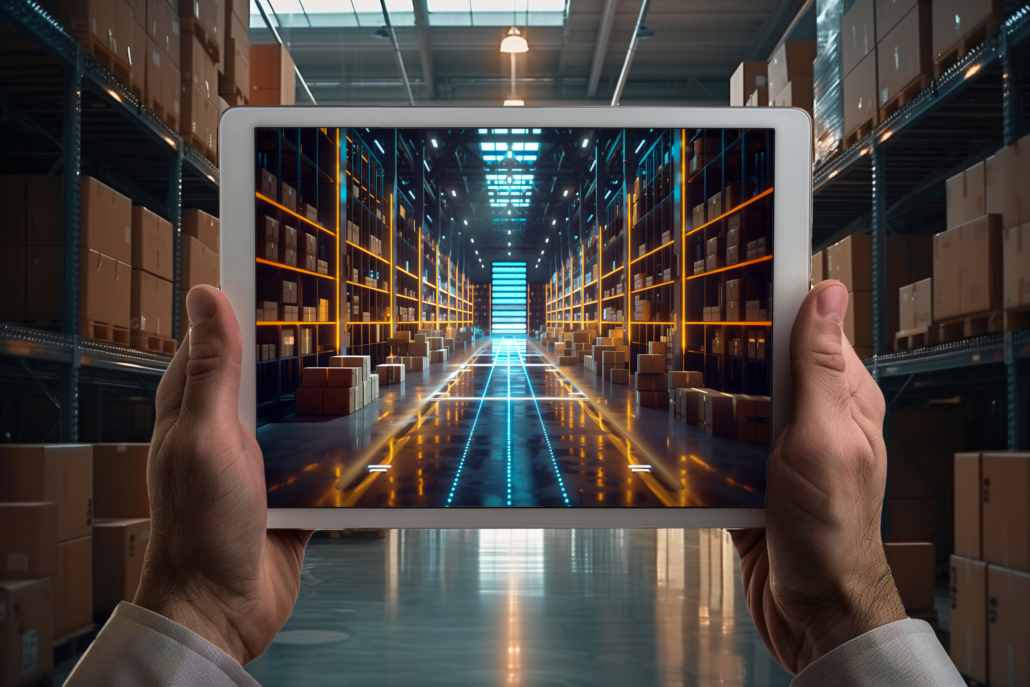In a global environment marked by heightened volatility, supply chains are navigating a landscape of unprecedented complexity. Customer demand is increasingly unpredictable, regulations are evolving rapidly, geopolitical disruptions are multiplying, and sustainability targets are intensifying. Together, these factors are pushing organizations to become significantly more agile, while enhancing their capacity for multidimensional analysis and decision-making. Today’s supply chain leaders are expected to process a growing volume of interconnected variables, often in real time. The ability to monitor operations is no longer sufficient: organizations must be able to simulate alternate scenarios, assess strategic levers, and adapt dynamically. This is where digital twin technology (a virtual replica of a physical asset or system) emerges as a potential game-changer. But how soon can its promise be realized? And more importantly, are supply chains truly equipped to capitalize on it?
Growing need for visibility and decision support in complex environments
Recent years have seen back-to-back disruptions: the global economic shutdown during COVID-19, the subsequent surge in demand, the Ever-Given incident in the Suez Canal, the invasion of Ukraine, and escalating security threats in the Red Sea. These disruptions have not only caused critical short-term disturbances but have also triggered long-term structural shifts within supply chains.
To respond to these rapidly evolving logistics dynamics, supply chain actors must continue planning across three critical levels: strategic (offer design, supplier negotiations, S&OP & IBP processes), tactical (sales forecasting, supply planning), and operational (order management, production, in-transit flow monitoring). This integrated approach is essential to generate long-term value and optimize resources at every level, especially at a time when companies are being called to account for their social and environmental impact.
However, while this planning framework is not new, the required pace has changed dramatically. Decision-makers must now operate under heightened time constraints, requiring impact assessments to be conducted at much greater speed.
It is self-evident that manually producing analyses that account for multiple dimensions, such as economic, environmental or service-related, across varying levels of granularity (from global networks to national, site-specific, or even warehouse-level perspectives), and involving multiple stakeholders (carriers, suppliers, customers), is fundamentally misaligned with today’s operating environment. Likewise, in a context defined by deep uncertainty, testing just one or two scenarios is no longer sufficient. The need for accelerated decision-making is now compounded by the growing demands of complexity.
The challenge, therefore, lies in simulating more variables, much faster. It is now clear that even the most capable supply chain teams, armed with conventional tools such as spreadsheets, will not be able to meet this new standard on their own.
The promise of digital twins
To address this seemingly intractable equation, technology may provide part of the answer. On paper, the digital twin meets many of the current requirements. It is a high-fidelity virtual replica of a physical asset or system (here, a supply chain) that enables real-time flow visualization, projection validation, and, most importantly, the simulation of operational levers.
Unlike static dashboards, digital twins offer interactive and user-friendly platforms where supply chain executives can test scenarios, forecast the consequences of decisions, and optimize processes across multiple objectives. Imagine a supply chain director able to instantly assess how a change in supplier would affect delivery timelines, costs, carbon emissions, or the chain’s resilience to geopolitical shocks.

A supply chain digital twin makes this possible, shifting from a static representation to a dynamic governance and decision-support tool. AI-powered simulations enable the inclusion of far more variables than previously feasible, allowing for faster and more informed decision-making. Theoretically, this empowers supply chain leaders to simulate, predict, and optimize decisions in real time, enhancing both agility and resilience. It also opens the door to identifying risks and opportunities that would otherwise remain hidden.
Barriers still to overcome
Naturally, much of this still appears highly theoretical, and in practice, few organizations can genuinely claim to have transformed their supply chain operations through a digital twin. The reasons for this are clear: significant obstacles remain.
The first challenge is technical. Implementing a digital twin requires extensive data management work to ensure data is not only reliable but, more importantly, comparable, and therefore standardized, to avoid the well-known pitfall: “garbage in, garbage out.” Yet data quality has historically been a weak point within supply chain functions. In addition, the computational capabilities available (both within supply chains and across organizations more broadly) often fall short when it comes to running complex algorithms on massive data volumes. This is particularly true in supply chains, where data is highly fragmented, sourced from disparate tools and sensors, and distributed across numerous stakeholders. This system fragmentation significantly compounds the challenge. Beyond the need for flawless data management, organizations must also build far more integrated and efficient data architectures. And this requirement extends beyond the supply chain function itself, as any truly comprehensive digital twin will necessarily require a cross-functional, end-to-end perspective.

The second major challenge concerns talent. While senior decision-makers may possess strong strategic vision, they increasingly need to rely on multi-source analytics, end-to-end scenario simulations, and a clear understanding of the implications of various operational levers. However, at the operational level, where domain experts are expected to configure the inputs that feed into simulations, there remains a noticeable gap in both training and awareness of such tools, despite progress made over the past 15 years. Put simply, a critical link in the chain is missing. Advanced technical skills remain scarce across supply chain teams. And while supply chain education programs are gradually incorporating modules on modeling, AI, and data governance, they are still insufficient to support a widespread upskilling effort.
In short, there is a fundamental change management issue. As things stand, even the most sophisticated tool is likely to be perceived as an opaque “black box,” criticized for undermining existing expertise and ultimately rejected by those expected to use it. Bridging the gap between domain knowledge and the technological potential of digital twins is therefore essential. Moreover, even if a digital twin were to be successfully implemented, its simulations could, paradoxically, increase the burden on teams by generating an overload of scenarios and parameters, leading to cognitive fatigue rather than better decision-making.
CONCLUSION
Like many emerging technologies, digital twins come with a paradox: companies that wait too long risk falling behind, while those that rush implementation may face insurmountable barriers. The key lies in sequencing. Prioritizing strong data governance and team capability-building is essential. Once these foundations are in place, digital twin technology holds enormous potential, not just as a technical upgrade, but as a fundamental shift in how supply chains are governed in an era of rapid and continuous change.










